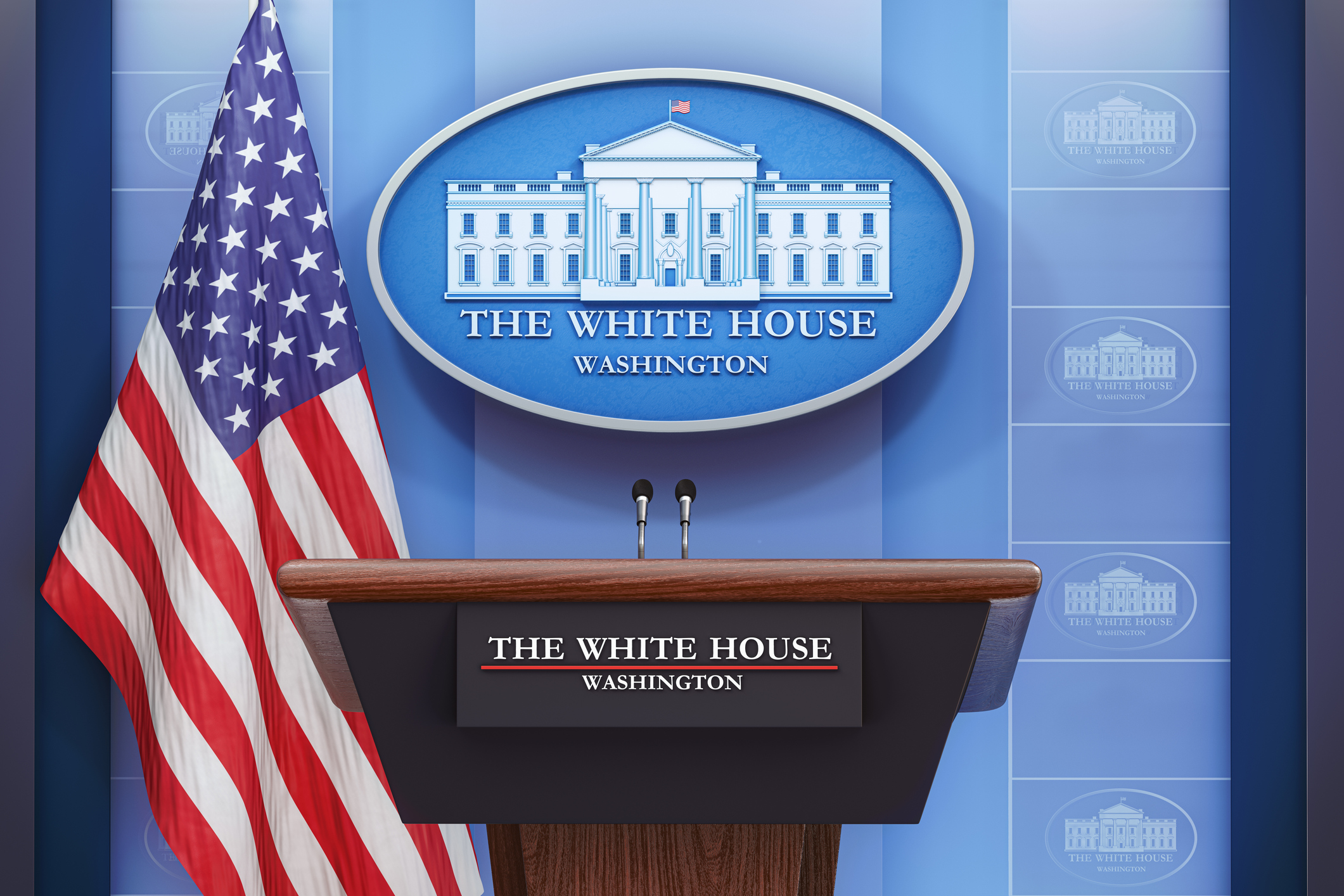Key Highlights:
- The CARES Act allocated $150 billion in aid to state, local, and tribal governments.
- Lawmakers and Governors in states across the country have allocated these funds towards various education-related expenditures.
- The federal CARES Act funding has been used to support instructional programming to help students catch up from interrupted instruction caused by COVID-19, improve air filtration in schools, to purchase equipment for schools to improve connectivity options for students, and more.
by: Ryan J. Stevens
H.R. 748, the CARES Act, provided roughly $2 trillion to individuals, businesses, and states in response to the coronavirus pandemic. DMGS previously looked at the CARES Act, which allocated $150 billion in aid to state, local, and tribal governments.
The President signed the CARES Act into law nearly five months ago. Since then, schools have shifted to virtual learning and canceled on-site learning. As states and school districts wrestle over how to proceed for the upcoming school year, how have states been spending CARES Act funding on education? Who is directing the funds: governors, lawmakers, or both?
Michigan

Michigan lawmakers passed Senate Bill 0373, which allocated $512 million of its federal CARES Act funding towards education. The bill included per-pupil payments of $350 to districts and public-school academies for CARES Act-related spending.
Senate Bill 0690 further appropriated $18 million to support instructional recovery programming, benchmark assessments, or health and safety expenditures necessary to provide instruction safely due to COVID-19. The bill makes eligible for funding any instructional recovery program specifically designed to enable students to catch up and resume learning that the pandemic interrupted. The bill sought to allocate all funding to school districts by the end of July on an equal per-pupil basis.
House Bill 5265 also appropriated $53 million in hazard pay to K-12 teachers. This funding supports equal one-time payments to classroom teachers who teach in a public school or nonprofit nonpublic school. The bill would cap payments at $500 per full-time equated teacher.
Vermont
Vermont lawmakers passed two bills to allocate CARES Act funding towards education-related expenses. H. 961 made the following education-related appropriations:
- Granted up to $1.5 million to reimburse COVID-19 costs incurred by approved independent schools that had one or more students enrolled whose tuition was funded by the student’s sending school district (publicly funded student) with a maximum reimbursement of $422 for each public funded student;
- Up to $1,000,000 shall be available to provide accounting and technical assistance to the supervisory unions and school districts to fully identify COVID-19 expenses and accurately process these within the statewide accounting system;
- $6.5 million to provide grants to Vermont K-12 covered schools to upgrade heating, ventilation, and air conditioning (HVAC) systems, and filtration and other methods of air treatment in response to the COVID-19 pandemic;
- $3.9 million shall be distributed to school districts for reimbursement of high school completion services; and
- $41 million for reimbursing COVID-19 costs incurred by school districts.
H. 965, signed by the Governor in early July, allows for up to $12 million of monies previously appropriated to reimburse COVID-19 costs incurred by school districts to be distributed to Summer Meal Sponsors to continue meal delivery services to children during June, July, and August.
South Carolina
In South Carolina, lawmakers passed H. 5202 in late June. The joint resolution authorized the expenditure of federal CARES Act funds, including $222.7 million for State Department of Education academic recovery camps, five days of academic instruction, and food services. The bill outlines the following:
- The Department of Education may reimburse public school districts up to $12 million for the additional cost of cafeteria workers’ salaries and the cost of meals to students that are not reimbursed by the U.S. Department of Agriculture;
- The Department of Education may reimburse public school districts up to $210.7 million for the cost of providing unbudgeted instructional support beyond the number of days and hours required by state law. The additional support is to focus on face-to-face instruction for any at-risk students from K-3 residing in the school district for Academic Recovery Camps in reading and math during the summer and students in 4-8 for five additional instructional days at the start of the school year;
- School districts utilizing Academic Recovery Camps must assess students at the beginning and end of the camp. The results of the pre- and post-assessments must be submitted to the Department of Education which, in turn, must provide the information to the Education Oversight Committee for evaluation of the impact the recovery camps had on student learning and the impact of the interventions on student learning;
- School districts must utilize the additional instructional days and assess each student enrolled 4-8 in reading and math. The assessment must utilize a pre- and post-formative assessment from the state-approved list;
- Schools must assess all students during the first two weeks of school to identify students needing additional support and the support schools must provide. Schools must assess all students again before the end of the 2020 Calendar Year to measure the impact of the intervention provided. The results of the pre- and post-assessments must be submitted to the Department of Education which, in turn, must provide the information to the Education Oversight Committee for evaluation of the pandemic’s impact on student learning and the impact of the interventions on student learning;
- Each district must identify the strategies used and document the services received by each student. Districts must report the expenditure of funds to the Department of Education under a uniform reporting mechanism developed by the department; and
- To help recoup extensive instruction time lost when public schools closed in Spring 2020 due to the COVID-19 pandemic:
- The State Department of Education must seek a waiver from all federal accountability-related testing requirements and concomitant accountability, school identification, and reporting requirements for the 2020-2021 School Year; and
- All state-mandated public-school accountability testing requirements and concomitant requirements are suspended for the 2020-2021 School Year unless prohibited by federal law.
Georgia
State School Superintendent Richard Woods announced in early August that Georgia was allocating $6 million of its CARES Act funding to purchase equipment for schools to improve connectivity options for students who do not have sufficient internet access at home. The announcement provided that:
- The funds will be used to purchase a variety of connectivity solutions for school districts, including Wi-Fi transmitters on school buses and other connectivity options as needed;
- For districts implementing a school bus Wi-Fi program, transmitters can be placed on buses that may be deployed for food delivery or on other vehicles that can be placed for one to three or more hours in students’ neighborhoods. Some districts may also choose to permanently affix Wi-Fi transmitters onto residential buildings where a high prevalence of students live (i.e., apartments/multifamily housing);
- To apply to receive connectivity equipment, local districts responded to a simple online survey distributed to superintendents. Equipment will be granted directly to school districts for their ongoing use and management. There will be no requirement to turn in the equipment after this school year. The Georgia Department of Education will also cover data charges and content filtering services from August 2020 to May 2021; and
- The distribution of equipment to school districts is based on the number of student households in school districts that do not have access to adequate connections at home, districts’ ability to match a small portion of their funds for internet-enabled remote learning options, and publication of a simple Wi-Fi transmitter deployment plan on the district’s website.
Wisconsin
Governor Tony Evers announced in mid-June more than $80 million in COVID-19 financial assistance to K-12 schools and higher education institutions. Governor Evers included $46.6 million for K-12 schools from the Governor’s Emergency Education Relief Fund, which Governors Evers established under the CARES Act.
Governor Evers announced that funding would prioritize students and districts that have the highest remote learning needs and which the pandemic has most affected. These funds are in addition to the $174.8 million that Wisconsin previously received through the Elementary and Secondary School Emergency Relief Fund.
One district, the Milwaukee Public Schools, stated last month that it had already spent $20 million on COVID-related expenses.
Tennessee
Tennessee’s Governor and the Financial Stimulus Accountability Group announced in early July that $81 million in CARES Act funding would be available through grants for K-12 and higher education institutions to assist with plans for a safe reopening. $61 million of this total funding is going towards K-12 grants, including:
- $11 million on LEA reopening grants to support continuous learning plan implementation throughout the year in amounts ranging from $25,000 – $150,000 each; and
- $50 million in district technology grants that schools can use on Wi-Fi devices, laptops, or any other devices needed to support reopening.
Latest News
Photo credit: iStock.com/sommart In 2025, state governments across the U.S. are advancing initiatives to improve administrative efficiency and modernize civil service, adopting tailored strategies to better serve residents. Recognizing the importance of adaptability, innovation, and [...]
Photo credit: iStock.com/BackyardProduction Governor Josh Shapiro delivered his 2025-26 budget address, outlining economic initiatives, public safety measures, infrastructure improvements, and education funding. His speech emphasized continued investment in key sectors to strengthen Pennsylvania’s [...]
Photo credit: iStock.com/Bet_Noire On January 20, 2025, Donald Trump was inaugurated as the 47th President of the United States, marking the beginning of a second term in office. Trump immediately set the tone for the [...]
Photo credit: iStock.com/Naypong The rise of Name, Image, and Likeness (NIL) rights has revolutionized collegiate athletics, empowering student-athletes to monetize their personal brands while maintaining eligibility, something we previously covered in 2023. Since California's groundbreaking [...]






Stay In Touch